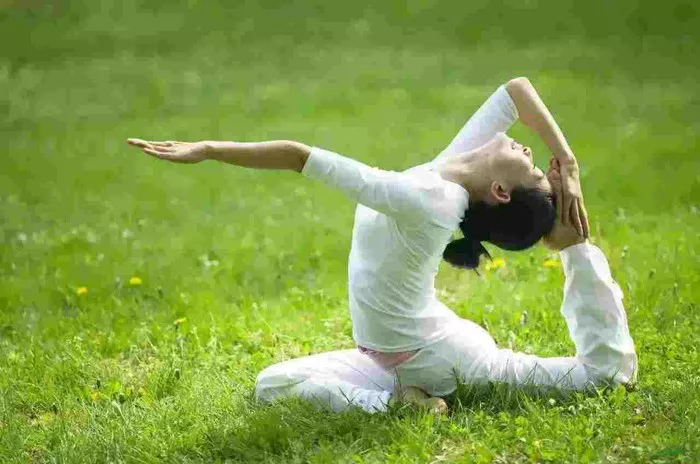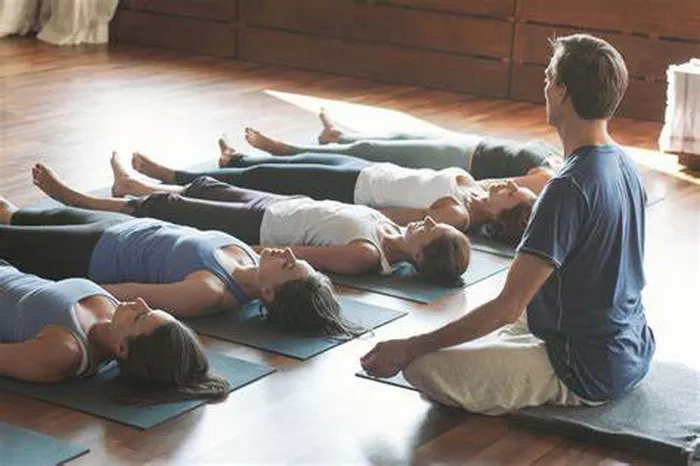Ashtanga Yoga, a practice revered for its physical rigor and spiritual depth, is underpinned by a rich and profound philosophy. Rooted in ancient Indian traditions, this philosophy serves as a guiding light for practitioners, offering a path to self – realization, inner peace, and harmonious living. Exploring the philosophy of Ashtanga Yoga is not only crucial for understanding the essence of the practice but also for unlocking its transformative potential. This article delves deep into the philosophical aspects of Ashtanga Yoga, uncovering the wisdom that has been passed down through generations.
The Eight Limbs of Yoga: The Core Philosophical Framework
At the heart of Ashtanga Yoga’s philosophy lies the concept of the Eight Limbs of Yoga, as outlined by the sage Patanjali in the Yoga Sutras. These eight limbs provide a comprehensive roadmap for spiritual growth and self – discipline, encompassing ethical principles, physical postures, breathing techniques, and meditation practices.
Yama: Ethical Observances in the World
Yama represents the first limb of yoga and focuses on ethical guidelines for our interactions with the external world. It comprises five principles: Ahimsa (non – violence), Satya (truthfulness), Asteya (non – stealing), Brahmacharya (moderation), and Aparigraha (non – greed). Ahimsa extends beyond the absence of physical violence to include non – violent thoughts and words. In the context of Ashtanga Yoga practice, it means approaching the body with kindness and respect, avoiding overexertion or injury.
Satya encourages practitioners to be honest in their actions, thoughts, and words, both on and off the yoga mat. Asteya goes beyond the literal act of stealing; it involves refraining from taking what does not rightfully belong to us, whether it be material possessions, ideas, or energy. Brahmacharya promotes moderation in all aspects of life, including diet, sleep, and sexual activity, as a means to conserve and channel energy. Aparigraha teaches the art of non – attachment and letting go of excessive desires, freeing the mind from the cycle of craving and aversion.
Niyama: Inner Self – Disciplines
The second limb, Niyama, focuses on self – disciplines that help cultivate a harmonious inner state. It consists of five principles: Saucha (purity), Santosha (contentment), Tapas (austerity), Svadhyaya (self – study), and Ishvara Pranidhana (surrender to a higher power). Saucha encompasses physical, mental, and emotional cleanliness. In Ashtanga Yoga, maintaining a clean practice space, following a healthy diet, and purifying the mind through meditation all contribute to saucha. Santosha encourages finding contentment in the present moment, accepting oneself and one’s circumstances without constant longing for more.
Tapas, often translated as “burning enthusiasm,” refers to the inner fire and determination to stay committed to the yoga practice, even when faced with difficulties. Svadhyaya involves the study of the self, both through the physical practice of asanas and the exploration of yoga philosophy. By observing the body’s sensations, emotions, and thought patterns during practice, practitioners gain deeper self – awareness. Ishvara Pranidhana is the practice of surrendering to a higher power, whether it be a personal deity, the universe, or the collective consciousness, recognizing that there is a greater force at work beyond our individual will.
Asana: The Physical Postures as a Path to Stillness
Asana, the third limb, refers to the physical postures in Ashtanga Yoga. However, asanas are not merely for physical fitness; they are a means to prepare the body for meditation and to cultivate mental focus and stability. Each posture in the Ashtanga sequence is designed to stretch, strengthen, and align the body, while also promoting the flow of prana, or life force energy. Through the practice of asanas, practitioners learn to control the body, develop balance and flexibility, and create a sense of physical and mental harmony. The discipline required to hold and transition between postures helps to train the mind to be more focused and present, laying the groundwork for deeper states of meditation.
Pranayama: Harnessing the Power of Breath
Pranayama, the fourth limb, focuses on breathing techniques that regulate and control the flow of prana. In Ashtanga Yoga, Ujjayi breath is the primary pranayama technique. Ujjayi breath involves a slow, deep inhalation and exhalation through constricted vocal cords, creating a soft, ocean – like sound. This type of breathing helps to calm the mind, increase oxygen supply to the body, and stimulate the parasympathetic nervous system, promoting relaxation. By synchronizing the breath with the movement of the body during asana practice, practitioners create a rhythmic flow that enhances the connection between the physical and mental aspects of the practice. Pranayama also helps to purify the energy channels in the body, allowing prana to flow more freely.
Pratyahara: Withdrawal of the Senses
Pratyahara, the fifth limb, is the practice of withdrawing the senses from external stimuli. In the context of Ashtanga Yoga, this means turning the attention inward during practice, focusing on the breath, body sensations, and inner experience rather than being distracted by the external environment. By practicing pratyahara, practitioners learn to gain control over the senses, reducing the influence of external distractions and developing greater self – awareness. This withdrawal of the senses is essential for deepening the meditation practice, as it allows the mind to become more concentrated and focused on the inner self.
Dharana: Concentration and One – Pointedness
Dharana, the sixth limb, refers to the practice of concentration. In Ashtanga Yoga, concentration is developed through various means, such as focusing on a specific drishti (gaze point) during asana practice, concentrating on the breath, or visualizing a particular image or concept. By training the mind to focus on a single point, practitioners gradually improve their ability to maintain sustained attention, reducing mental distractions and wandering thoughts. Dharana is a precursor to meditation, as it helps to prepare the mind for the deeper states of absorption and awareness.
Dhyana: The State of Meditation
Dhyana, the seventh limb, is the state of meditation. In Ashtanga Yoga, meditation is not seen as a separate practice but as a natural progression from the previous limbs. When the mind has been trained through the practice of asana, pranayama, pratyahara, and dharana, it becomes more still and focused, allowing for the experience of dhyana. During dhyana, the mind enters a state of deep absorption, where the practitioner becomes one with the object of meditation, whether it be the breath, a mantra, or a spiritual concept. This state of meditation is characterized by a sense of inner peace, clarity, and connection to something greater than oneself.
Samadhi: The Ultimate State of Liberation
Samadhi, the eighth and final limb, represents the ultimate state of liberation and self – realization. It is a state of profound union with the divine, where the individual self merges with the universal consciousness. In Samadhi, the practitioner transcends the limitations of the body, mind, and ego, experiencing a state of pure bliss and freedom. While achieving Samadhi is the ultimate goal of Ashtanga Yoga, it is a long – term process that requires dedicated practice and the cultivation of all the previous limbs.
The Philosophy of Movement and Breath: A Holistic Approach
Ashtanga Yoga’s philosophy extends beyond the eight limbs to include the unique relationship between movement and breath. The practice emphasizes the synchronization of vinyasa (flowing movement) with Ujjayi breath, creating a holistic experience that integrates the physical, mental, and energetic aspects of the body.
Vinyasa: The Rhythmic Flow of Movement
Vinyasa in Ashtanga Yoga refers to the sequence of movements that link each posture together. This flowing movement is not random but follows a specific pattern, typically involving transitions such as moving from a standing posture to Chaturanga Dandasana, Upward – Facing Dog, and Downward – Facing Dog. The vinyasa flow serves multiple purposes. It warms up the body, increasing blood circulation and preparing the muscles and joints for the more challenging postures. The rhythmic nature of the vinyasa also helps to focus the mind, as practitioners must concentrate on the movement of the body with each breath. Additionally, the vinyasa flow generates internal heat, which aids in detoxification and purification of the body.
Ujjayi Breath: The Life Force of the Practice
Ujjayi breath, as mentioned earlier, is central to Ashtanga Yoga’s philosophy of movement and breath. It is not just a breathing technique but a means of connecting the body and mind. The sound and sensation of Ujjayi breath act as an anchor for the mind, drawing it away from distractions and into the present moment. As the breath flows in a slow, rhythmic manner, it helps to calm the nervous system, reducing stress and anxiety. The synchronization of Ujjayi breath with vinyasa creates a seamless flow, where the movement of the body becomes an expression of the breath. This connection between movement and breath is a fundamental aspect of Ashtanga Yoga’s philosophy, highlighting the importance of integrating the physical and mental aspects of the practice.
The Philosophy of Self – Transformation
At its core, the philosophy of Ashtanga Yoga is about self – transformation. Through the consistent practice of the eight limbs, the synchronization of movement and breath, and the cultivation of self – awareness, practitioners embark on a journey of inner growth and evolution.
Cultivating Self – Discipline
Ashtanga Yoga requires a high level of self – discipline. The fixed sequence of postures, the commitment to regular practice, and the adherence to the principles of breath and movement all demand self – control and dedication. By practicing self – discipline on the yoga mat, practitioners develop the strength and resilience to overcome challenges in other areas of life. The discipline of Ashtanga Yoga helps to train the mind to be more focused, determined, and persistent, qualities that are essential for personal growth and self – improvement.
Developing Self – Awareness
Self – awareness is a key aspect of Ashtanga Yoga’s philosophy of self – transformation. Through the practice of asanas, pranayama, and self – study, practitioners learn to observe their body, mind, and emotions without judgment. They become aware of their physical limitations, mental patterns, and emotional triggers. This self – awareness allows them to make conscious choices, modify their behavior, and grow as individuals. By understanding themselves better, practitioners can address areas of weakness, cultivate positive qualities, and live a more authentic and fulfilling life.
Transcending the Ego
Another important aspect of self – transformation in Ashtanga Yoga is the transcendence of the ego. The practice challenges the practitioner to confront their limitations, fears, and insecurities, and to let go of the sense of self – importance. As practitioners progress in their practice, they begin to realize that the self is not separate from the universe but is an integral part of it. This realization leads to a sense of humility, compassion, and interconnectedness with all beings. By transcending the ego, practitioners are able to experience a deeper sense of peace, joy, and fulfillment.
Conclusion
The philosophy of Ashtanga Yoga is a rich and multi – faceted system that offers a comprehensive approach to physical, mental, and spiritual well – being.By understanding and applying these philosophical principles in their practice, practitioners can unlock the full potential of Ashtanga Yoga, experiencing not only physical benefits but also profound inner peace, self – awareness, and a deeper connection to the world around them.




















